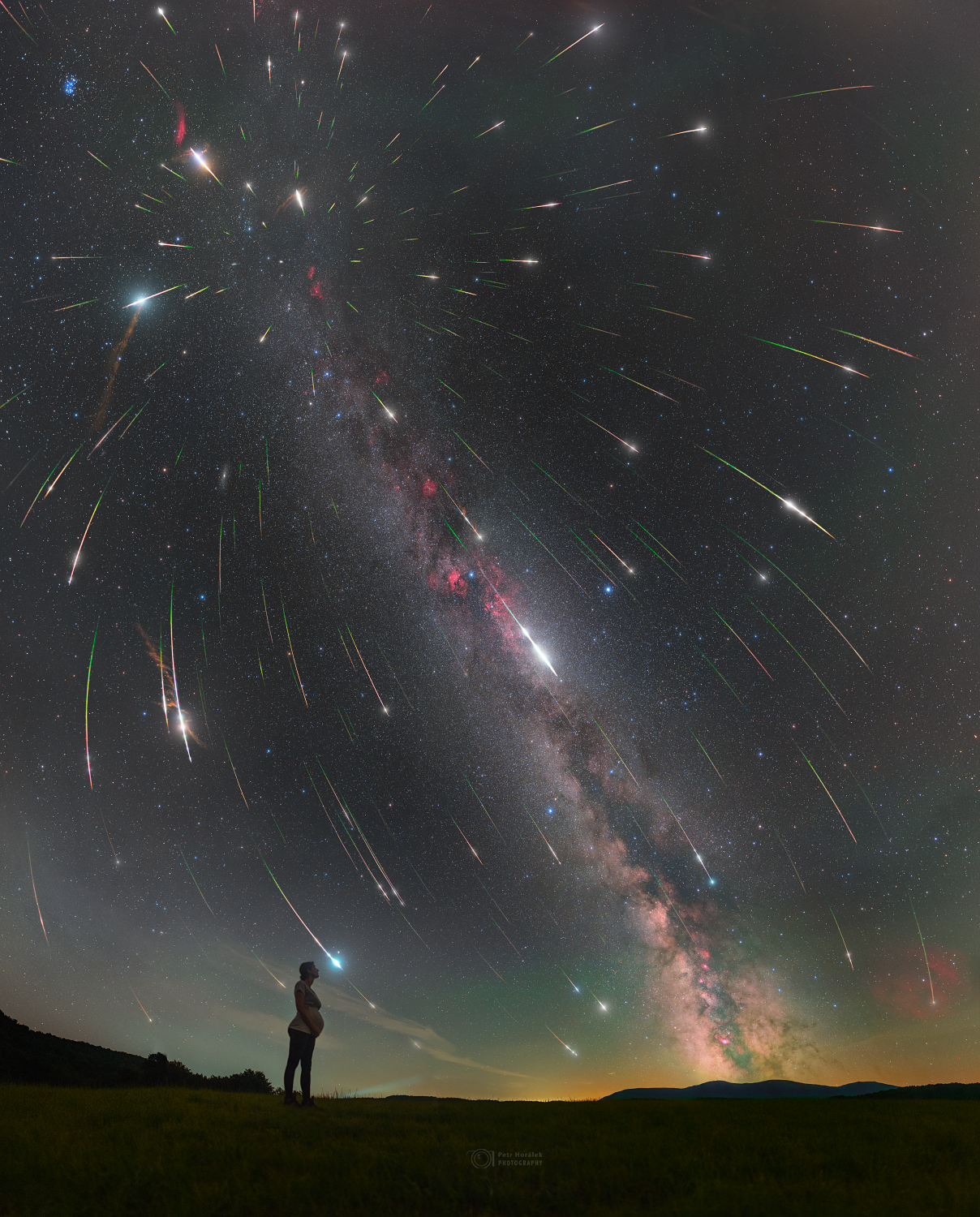
Anything you wish… may come true this night. They always say “make a wish” when a shooting star appears. Shooting stars, however, are not stars but meteors and it’s the glowing trail of a meteoroid or a piece of space debris that burns as soon as it enters the earth’s atmosphere. And it is this phenomenon that makes the shooting star very attractive, ideal, and considered as a lucky item for making a wish. Because a shooting star was a tangible symbol of the gods looking down at that moment, it was believed that a wish or request made upon seeing the star was more likely to be heard and granted. For many people, the best time for making their wishes comes every year around mid-August, when the icy dust of comet Swift-Tuttle enters the Earth’s atmosphere, bringing one of the most observed meteor showers ever–Perseids. In this image, 223 Perseid meteors (some of them very bright with their persistent trains) captured during the 2023 Perseids peak over Poloniny Dark Sky Park bring chances to make a wish to a happy woman, who probably had wished one more wish a few months before that: To bring a new life on a small world called Earth.
The meteors were captured from 9th to 14th August 2023 over eastern Slovakia. Since I was forced to travel among more locations (due to working duties), the image was not taken precisely from one spot this time and thus it is not a regular multi-exposure astrophotograph. However, all meteors were captured at an area of about 100 km across eastern Slovakia, specifically the Poloniny Dark Sky Park (at Kolonica Observatory platform), Zahradné (nearby Prešov), Roztoky (at the local observatory’s platform), and Šariš Castle platform. Most of the meteors were captured during the maximum night of August 12th from Poloniny, Kolonica, where the foreground image was taken too. That night, also bright airglow occurred in the sky and so some parts of the sky in the image are more colorful. Of course, as a modified camera was used, a lot of colors came from HII regions along the Milky Way, too.
For the foreground, Canon Ra was used with Sigma Art 35mm, f2.0, ISO 8000, and 76 single 10s exposures were stitched to the final panorama (taken from a tripod, no tracking). Meteors were captured by timelapsing with two Canon 6D cameras on tripods, one with Saymang 12mm (f2.8) and one with Samyang 14mm (f2.8), with ISO 8000 and 10000 (where the sky was darkest), always 30s exposures. Meteors were then registered to the foreground panorama.


